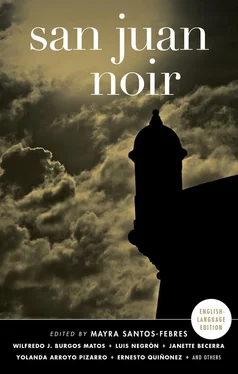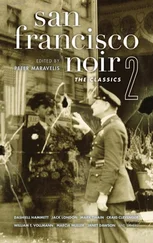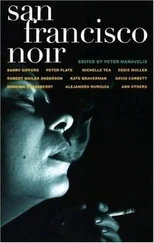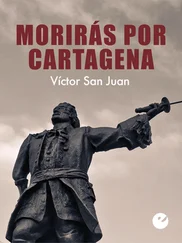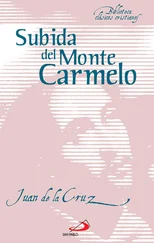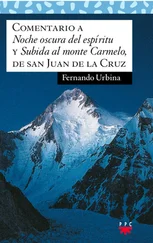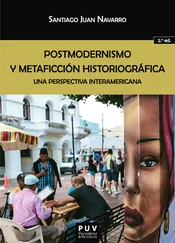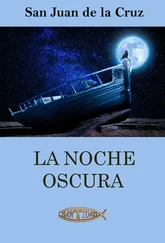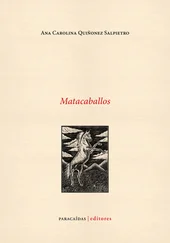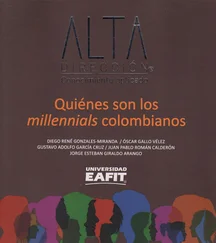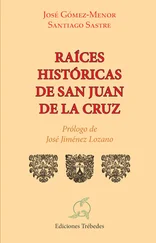Ernesto Quiñonez - San Juan Noir
Здесь есть возможность читать онлайн «Ernesto Quiñonez - San Juan Noir» весь текст электронной книги совершенно бесплатно (целиком полную версию без сокращений). В некоторых случаях можно слушать аудио, скачать через торрент в формате fb2 и присутствует краткое содержание. Город: New York, Год выпуска: 2016, ISBN: 2016, Издательство: Akashic Books, Жанр: Детектив, на английском языке. Описание произведения, (предисловие) а так же отзывы посетителей доступны на портале библиотеки ЛибКат.
- Название:San Juan Noir
- Автор:
- Издательство:Akashic Books
- Жанр:
- Год:2016
- Город:New York
- ISBN:978-1-61775-296-4
- Рейтинг книги:3 / 5. Голосов: 1
-
Избранное:Добавить в избранное
- Отзывы:
-
Ваша оценка:
- 60
- 1
- 2
- 3
- 4
- 5
San Juan Noir: краткое содержание, описание и аннотация
Предлагаем к чтению аннотацию, описание, краткое содержание или предисловие (зависит от того, что написал сам автор книги «San Juan Noir»). Если вы не нашли необходимую информацию о книге — напишите в комментариях, мы постараемся отыскать её.
San Juan Noir — читать онлайн бесплатно полную книгу (весь текст) целиком
Ниже представлен текст книги, разбитый по страницам. Система сохранения места последней прочитанной страницы, позволяет с удобством читать онлайн бесплатно книгу «San Juan Noir», без необходимости каждый раз заново искать на чём Вы остановились. Поставьте закладку, и сможете в любой момент перейти на страницу, на которой закончили чтение.
Интервал:
Закладка:
San Juan Noir
Introduction
Crimes of the Urban Caribbean

Puerto Rico is often portrayed as sandy beaches, casinos, luxury hotels, relaxation, and never-ending pleasure — a place that satisfies all senses and appetites.
Yet the city of San Juan is much more than that. The capital of the Commonwealth of Puerto Rico is the oldest Spanish settlement in all the territories and colonies of the United States. Since Puerto Rico is economically dependent on the US, the financial downturn of 2008 hit us hard. Many Puerto Ricans have left the island, looking for a better life. Crime has risen and the black market has thrived. As in many crises, art, music, and literature have also flourished. Never before has there been so much literary production. We have responded to our crisis with many stories to tell. And, especially in these times, many of those stories are noir.
San Juan’s diverse districts include Hato Rey, with both residential and banking buildings; El Condado, with its luxury hotels; and the beautifully kept colonial district of Old San Juan. But between these first world neighborhoods lies an impoverished and dangerous city. The dilapidated streets of the once prosperous Río Piedras are filled with old Spanish Revival quintas that have been converted — some into bars, others into homeless shelters for immigrants and sex workers. Avenida Gándara and Avenida Ponce de León, major commercial arteries during the fifties and sixties, now act as gateways to this decaying area. Barrio Obrero, famously a hotbed for salsa music, is now controlled by the drug trade. If you follow Avenida Borinquen to Laguna San José, through Buen Consejo, Cantera, and Residencial las Margarita, you can watch as small boats loaded with drugs arrive, guided by former fishermen. Inland, nestled in lush, green hills, Caimito and other nearby barrios attempt to create distance from the violence of the city.
This anthology gathers stories that take place all over San Juan, in both the poorest and richest neighborhoods. The first section, Fallen Angels, opens with “Death on the Scaffold.” Author Janette Becerra sets her story in Santa Rita, home of intellectuals, university professors, lawyers, and doctors, who live imprisoned in their high-rise buildings, trying to escape the dangers that surround them. Then we move to Callejón de Gámbaro in Old San Juan with Manolo Núñez Negrón in “Fish Food.” This is a tale of friendship between two boys — one poor, the other not so poor, but not rich either. Tere Dávila takes us outside of the gated colonial city and into Barrio Obrero; in “el barrio,” the humble, God-fearing janitor Chin Fernández is caught committing the petty crime of stealing women’s underwear. Yet this is not the worst of his sins. In “Two Deaths for Ángela,” a young woman fights disconnection and loneliness while roaming from Calle Loíza to Calle Canals to Plaza del Mercado de Santurce — all gathering places for salsa dancing, intimacy, and love. The protagonist’s perspective is vastly darker, filled with violence, attempted rape, and death. My own story, “Matchmaking,” portrays the life of El Koala Gutierréz, a hit man with a dispassionate life. In barrio Buen Consejo, he discovers desire, and it leads to his demise.
Part II: Crazy Love opens with “Dog Killer,” a story by the 2014 Lambda Literary Award winner Luis Negrón, the first Puerto Rican to win this prestigious prize. We are guided through Parada 15–18 in Santurce, near Cajellón Colectora, an alley in Trastalleres. This barrio is known for being where salsa singer Andy Montañez grew up. Once prosperous, the factories have now closed, and the area is full of unemployed workers roaming the streets, searching for money. Outside the gates of a shut-down factory, a different kind of love emerges. In “Saint Michael’s Sword,” one of Puerto Rico’s most renowned noir writers, Wilfredo J. Burgos Matos, offers a bewildering story that takes place in Río Piedras, just a few streets away from Hato Rey. His hustler protagonist, Ángel, wakes up injured in the middle of the street and must figure out who attacked him. In “A Killer Among Us,” we travel back in space and time to a rural community on the outskirts of the city, where urban development meets the campo where the cane cutters lived. Many of these rural workers left the island and settled in the US, and Manuel A. Meléndez, the son of one of those original emigrants, imagines a life that could have been his. “Sweet Feline” is set in El Condado, the tourist district; Alejandro Álvarez Nieves depicts a hotel worker and call girl, and what goes on behind closed doors in one of the many extravagant hotels on the island. In “Things Told While Falling” by Yolanda Arroyo Pizarro, the murder of Violeta pulls a detective deep into the passionate love triangle between a husband, his young wife, and her best friend, a lesbian. As the cop delves further into the mystery, he learns that “found bodies make silent speeches.”
Part III: Never Trust Desire comprises stories by Ernesto Quiñonez, an Ecuadorian — Puerto Rican writer living in New York; SM de Literatura Juvenil award winner José Rabelo; acclaimed author and digitial communications manager Edmaris Carazo; and poet and short story writer Charlie Vázquez. Quiñonez’s beautiful narrative brings the reader across the Don Hermanos Bridge as an expatriate returns in search of his father. His sentimental connection to the city leads him astray, and he is deceived as to his true origins. Next, Rabelo gets inside the head of a math teacher and his desire for Samira, an underprivileged student from the Manuel A. Pérez housing development in Río Piedras. One day Samira disappears, but the paths of the two protagonists eventually cross in the streets of Santurce, and the maestro’s forbidden love comes to fruition. Then we travel back across the city to Old San Juan with Edmaris Carazo. She tells of a hit-and-run provoked by drugs and alcohol, in which an ordinary young woman becomes an accessory to the crime: San Juan’s violence is pervasive, and can turn anyone into a killer. In the last story, “Death Angel of Santurce,” the body of a streetwalker is found on Avenida Fernández Juncos. The police insist that it’s an open-and-shut case that should be forgotten. But then the reader is taken back to the hours before the woman’s death, when she is desperately seeking love and survival.
These are the stories of San Juan Noir . I hope they spark your imagination, and reveal a side of Puerto Rico otherwise obscured by the tourist trade and preconceptions. Maybe it will also pique your curiosity, and you will come visit our “pearl of the Caribbean.”
Mayra Santos-Febres
San Juan, Puerto Rico
July 2016
Part I
Fallen Angels
Death on the Scaffold
by Janette Becerra
Santa Rita
I was only interested in the incident because I ended up looking him in the eye. I had him up close, so I looked into his eyes. That little gesture, for someone familiar with my proclivities, makes a world of difference. You see, beyond the careful contemplation of what takes place inside my own apartment, I’m blessed not to see. From the height of my apartment, Río Piedras is just a mosaic of sepia tones, with a few tiles for garish contrast scattered here and there. Its grout, cracked and gray, is made up of avenues and alleyways of nervous trajectories, bustling with mechanical insects and organisms of unknown species, walking about day and night with purposes that — for me, at least — remain indecipherable. There, in the distance, the blur of San Juan: an impressionist painting of restless brushstrokes, silver streaks with white dots that I’ve never been able to identify, and beyond that, the sea. That stripe of cobalt blue they call the ocean, there in the distance. Here, above, none of that matters. I go down once a week to stock up on the essentials. There’s a shop on the first floor where I get what I need, which isn’t much. The rest of my life transpires between these four walls. Let’s call it my private command center. Perhaps the world is preparing for man’s return to the primordial cave, from where you can order and pay for everything, think of and resolve everything, win and lose everything — even your life — without ever going down.
Читать дальшеИнтервал:
Закладка:
Похожие книги на «San Juan Noir»
Представляем Вашему вниманию похожие книги на «San Juan Noir» списком для выбора. Мы отобрали схожую по названию и смыслу литературу в надежде предоставить читателям больше вариантов отыскать новые, интересные, ещё непрочитанные произведения.
Обсуждение, отзывы о книге «San Juan Noir» и просто собственные мнения читателей. Оставьте ваши комментарии, напишите, что Вы думаете о произведении, его смысле или главных героях. Укажите что конкретно понравилось, а что нет, и почему Вы так считаете.
